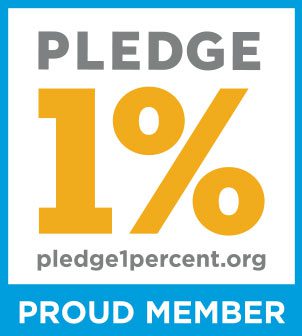Promoting a nonprofit fundraiser is no small feat – especially nowadays when it feels like everyone is vying for attention. Putting together a sound fundraising strategy takes a lot of hard work, and in order to maximize your return on that work you need:
- Clear messaging across all of your platforms
- A realistic and effective content strategy
- Multiple marketing channels and points of engagement
Here’s how to accomplish all three:
Clear Messaging
Every cause needs clear messaging. Without it, you’ll have problems conveying what you do, why, and how in a way that is as emotional gripping as it is unforgettable. Your messaging has to compel donors to want to give to your cause and inspire them to become brand ambassadors themselves. Here are a couple of strategies that will help:
Identify your universal selling proposition (USP):
Fill in the brackets:
[YOUR BRAND] offers [PRODUCT/SERVICE] for [PEOPLE YOU’RE TRYING TO HELP] to [WAY IT WILL IMPROVE THEIR LIVES]. We do this because [YOUR WHY].
Pitch it:
Sell your nonprofit in an elevator pitch by identifying the following in approximately 30 seconds:
- Define the problem (opening with a question or a shocking statistic works well here)
- Describe your unique solution
- Identify who you’re helping
- Make a compelling call-to-action
- Extend an invitation to continue the conversation
Tell your story:
If your nonprofit houses young adults aging out of foster care and your best friend growing up was one of them, tell that story. If you’re running a food drive to help people displaced by wildfires because four years ago you were in their position, let your audience know. By explaining why you’re driven to help and showing how your organization will be impactful, you’ll be sure to pull your audience’s heartstrings.
Content Strategy
You content strategy is involves the planning, development, and publication of the content you’re using to tell your nonprofit’s story. It includes all the channels and communication methods you’ll be using, as well as how and when. To do this, you need to answer the following questions:
- What am I hoping to achieve through my marketing efforts?
- Which marketing channels will I be using?
- What kind of content will I be creating?
- What is my budget and timeline?
- Am I hoping to recruit new volunteers, engage or recruit donors, or simply raise awareness?
Once you know the answers to these questions, you need to map out a realistic timeline that shows what content you’ll be producing, where, and how.
Here’s an example:
| Content Type | Creator | Channel(s) | Due Date | Publication Date |
| Blog post | Tammy M. | Facebook, Twitter, LinkedIn | 4/29 | 5/6 |
| Email Blast | Scott J. | 5/1 | 5/8 | |
| 30 second video | Rodrigo M. | YouTube, TikTok | 5/4 | 5/11 |
| Blog post | Jocelyn Y. | Facebook, Twitter, LinkedIn | 5/6 | 5/13 |
Track your progress of your nonprofit fundraiser with social media metrics. These will indicate what’s working, what isn’t, and gives you the opportunity to make adjustments as needed.
Marketing Channels and Engagement
Now that you have a clear messaging and a content strategy in place, you’re ready to start marketing. Make the most of your efforts by:
- Creating a landing page that provides all of the information your page visitors will need
- Running an email marketing campaign with your clear messaging and emotionally hooking content
- Publishing blogs, statistics, videos, testimonials, and more on your social media platforms
- Creating keyword-focused ads to help potential donors find you through search engines
- Contacting media companies that can promote your message to a wider audience
Promoting Your Nonprofit Fundraiser
By having a clear message, a sound content strategy, and engaging marketing, you’ll be maximizing your fundraising efforts and inspire donors to contribute to your cause.



0 Comments